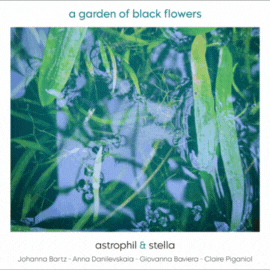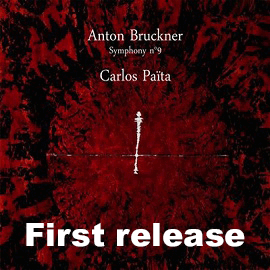 Wolfgang Amadeus Mozart: Serenaden Nr. 6 KV 239 & 13 (KV 525, Kleine Nachtmusik) + Adagio & Fuge c-Moll KV 546 + Adagio & Allegro für eine Orgelwalze in einer Spieluhr KV 594; Berliner Barock Solisten, Reinhard Goebel; 1 CD Hänssler Classic HC21013; Aufnahme 01.2021, Veröffentlichung 03.09.2021 (51'29) – Rezension von Remy Franck
Wolfgang Amadeus Mozart: Serenaden Nr. 6 KV 239 & 13 (KV 525, Kleine Nachtmusik) + Adagio & Fuge c-Moll KV 546 + Adagio & Allegro für eine Orgelwalze in einer Spieluhr KV 594; Berliner Barock Solisten, Reinhard Goebel; 1 CD Hänssler Classic HC21013; Aufnahme 01.2021, Veröffentlichung 03.09.2021 (51'29) – Rezension von Remy Franck

Alles ist in Bewegung in den tänzerischen Serenaden, die die Berliner Barock Solisten unter ihrem musikalischen Leiter Reinhard Goebel für Hänssler aufgenommen haben. Voller Vitalität strotzen sie auch von brillanten Farben. Der Orchesterklang ist transparent und detailreich. Und wenn Sie glauben, die KV 525 sei Ihnen bis in den letzten Winkel bekannt, so werden Sie in dieser Interpretation doch noch Neues entdecken, kein Zweifel. Und Goebel tut all das nicht willkürlich, sondern nachdem er sich im Quellenmaterial informiert und inspiriert hat. Das beschreibt er eindrücklich in seinem lesenswerten Aufsatz im Textheft der CD. Er hat übrigens in der Nachtmusik vor der Romanze ein weiteres Menuett eingefügt, das der Mozart-Schüler Thomas Attwood schrieb und Mozart 1791 noch ergänzt hat. Dieses Menuett steht an der Stelle des ursprünglich ersten von zwei Menuetten, das Goebel zufolge verloren ging.
Zwischen die Dur-Serenaden hat Goebel tiefschürfend gespielte zwei Moll-Adagios geschoben, um so die zwei Seelen Mozarts zu zeigen.
Everything is in motion in the dance-like serenades that the Berlin Baroque Soloists have recorded for Hänssler, conducted by their Music Director Reinhard Goebel. Full of vitality, they also shine with brilliant colors. The orchestral sound is transparent and rich in detail. And if you think you know K. 525 down to the last detail, you’ll still discover something new in this interpretation, no doubt. And Goebel does not do all this arbitrarily, but after having informed and inspired himself in the source material. He describes this impressively in his essay in the CD’s booklet, which is well worth reading. By the way, he inserted another minuet in the Nachtmusik, just before the Romance. This minuet was written by Mozart’s pupil Thomas Attwood and revised by Mozart in 1791. It stands in the place of the original first minuet which, according to Goebel, was lost.
Between the serenades in Major Goebel has interspersed profoundly played two Adagios in Minor, thus effectively showing Mozart’s two souls.

























